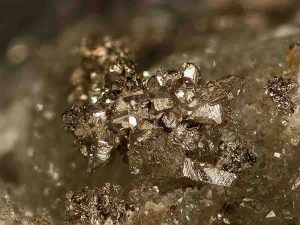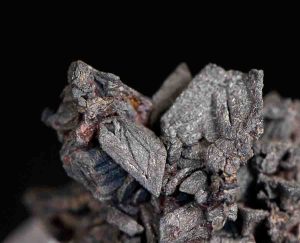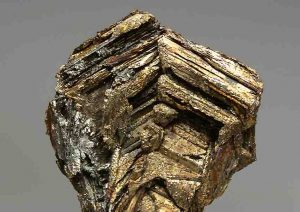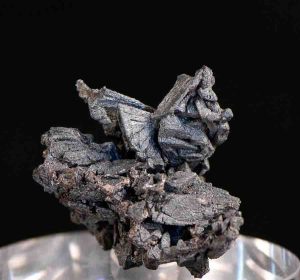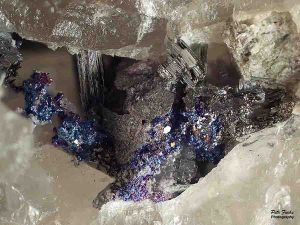
Formula: Bi
System: Trigonal
Lustre: Metallic
Hardness: 2 – 2½
Locality: Schneeberg District, Erzgebirge, Saxony, Germany.
Name Origin: Probably from the Arabic bi ismid, meaning having the properties of antimony.
Bismuth is a chemical element with the symbol Bi and atomic number 83. Bismuth, a pentavalent post-transition metal and one of the pnictogens, chemically resembles its lighter homologs arsenic and antimony. Elemental bismuth may occur naturally, although its sulfide and oxide form important commercial ores. The free element is 86% as dense as lead. It is a brittle metal with a silvery white color when freshly produced, but surface oxidation can give it a pink tinge. Bismuth is the most naturally diamagnetic element, and has one of the lowest values of thermal conductivity among metals.
Bismuth metal has been known since ancient times, although it was often confused with lead and tin, which share some physical properties. The etymology is uncertain, but possibly comes from Arabic bi ismid, meaning having the properties of antimony or the German words weiße Masse or Wismuth (“white mass”), translated in the mid-sixteenth century to New Latin bisemutum.
Bismuth was long considered the element with the highest atomic mass that is stable. However, in 2003 it was discovered to be weakly radioactive: its only primordial isotope, bismuth-209, decays via alpha decay with a half life more than a billion times the estimated age of the universe. Because of its tremendously long half-life, bismuth may still be considered stable for almost all purposes.
Physical Properties of Bismuth
Cleavage: {0001} Perfect
Color: Silver white, Pinkish white, Red.
Density: 9.7 – 9.8, Average = 9.75
Diaphaneity: Opaque
Fracture: Uneven – Flat surfaces (not cleavage) fractured in an uneven pattern.
Hardness: 2-2.5 – Gypsum-Finger Nail
Luminescence: Non-fluorescent.
Luster: Metallic
Magnetism: Nonmagnetic
Streak: silver white
Photos
